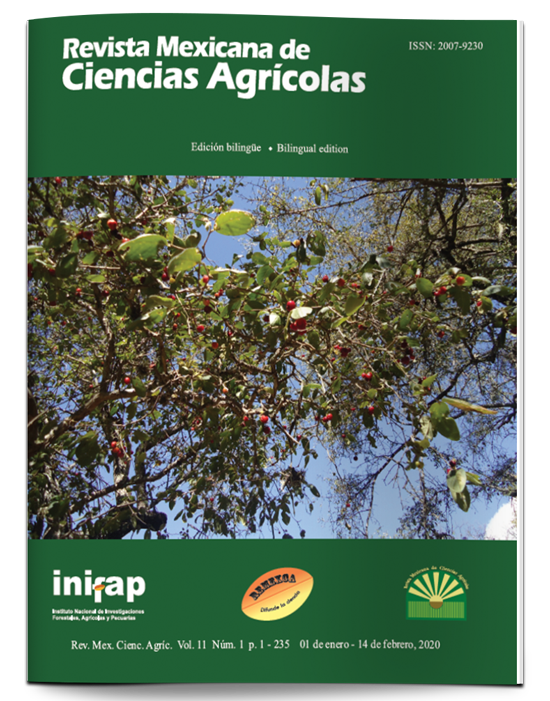Identification of discriminatory elements to characterize Coffea arabica L. using main components
DOI:
https://doi.org/10.29312/remexca.v11i1.2207Keywords:
main components, Mundo Novo, sensory quality of coffee, TypicaAbstract
The evaluation of cup quality in Coffea arabica L. agrosystems is necessary to generate alternatives that ensure the quality and differentiation of coffee in Coatepec, Veracruz, Mexico. The present study was carried out with the objective of evaluating the physical and sensory quality of the Typica and Mundo Novo varieties through the analysis of main components, during the 2017-2018 period, to identify the variables that are associated with the cup quality of the varieties. Eleven samples of cherry coffee were processed with wet benefit to assess their physical and sensory characteristics. The physical characteristics were evaluated according to the international standards of the Specialty Coffee Association of America (SCAA). According to the student’s t-test, the results indicate that there are no significant differences between varieties with respect to physical quality defined by grain size, shape and defects. Sensory properties were analyzed using the principal component technique. The results show that two of the seven components explain 73.67% of total variability. The first refers to 47.24% and is negatively correlated with the variables taste, residual taste, acidity and overall appreciation. While, the second explains 26.43% and correlates positively with the body and balance variables. Finally, the results indicate that there were no significant differences in relation to the physical quality of the grain and cup between varieties, since both obtained 80 points and are considered very good quality coffees.
Downloads
Published
How to Cite
Issue
Section
License
The authors who publish in Revista Mexicana de Ciencias Agrícolas accept the following conditions:
In accordance with copyright laws, Revista Mexicana de Ciencias Agrícolas recognizes and respects the authors’ moral right and ownership of property rights which will be transferred to the journal for dissemination in open access. Invariably, all the authors have to sign a letter of transfer of property rights and of originality of the article to Instituto Nacional de Investigaciones Forestales, Agrícolas y Pecuarias (INIFAP) [National Institute of Forestry, Agricultural and Livestock Research]. The author(s) must pay a fee for the reception of articles before proceeding to editorial review.
All the texts published by Revista Mexicana de Ciencias Agrícolas —with no exception— are distributed under a Creative Commons License Attribution-NonCommercial 4.0 International (CC BY-NC 4.0), which allows third parties to use the publication as long as the work’s authorship and its first publication in this journal are mentioned.
The author(s) can enter into independent and additional contractual agreements for the nonexclusive distribution of the version of the article published in Revista Mexicana de Ciencias Agrícolas (for example include it into an institutional repository or publish it in a book) as long as it is clearly and explicitly indicated that the work was published for the first time in Revista Mexicana de Ciencias Agrícolas.
For all the above, the authors shall send the Letter-transfer of Property Rights for the first publication duly filled in and signed by the author(s). This form must be sent as a PDF file to: revista_atm@yahoo.com.mx; cienciasagricola@inifap.gob.mx; remexca2017@gmail.
This work is licensed under a Creative Commons Attribution-Noncommercial 4.0 International license.



